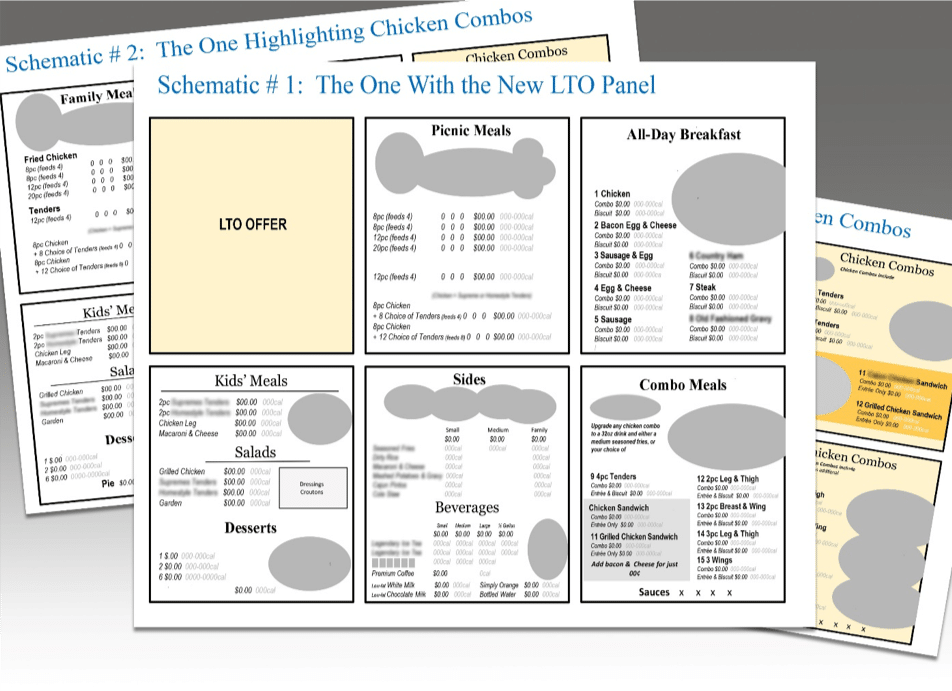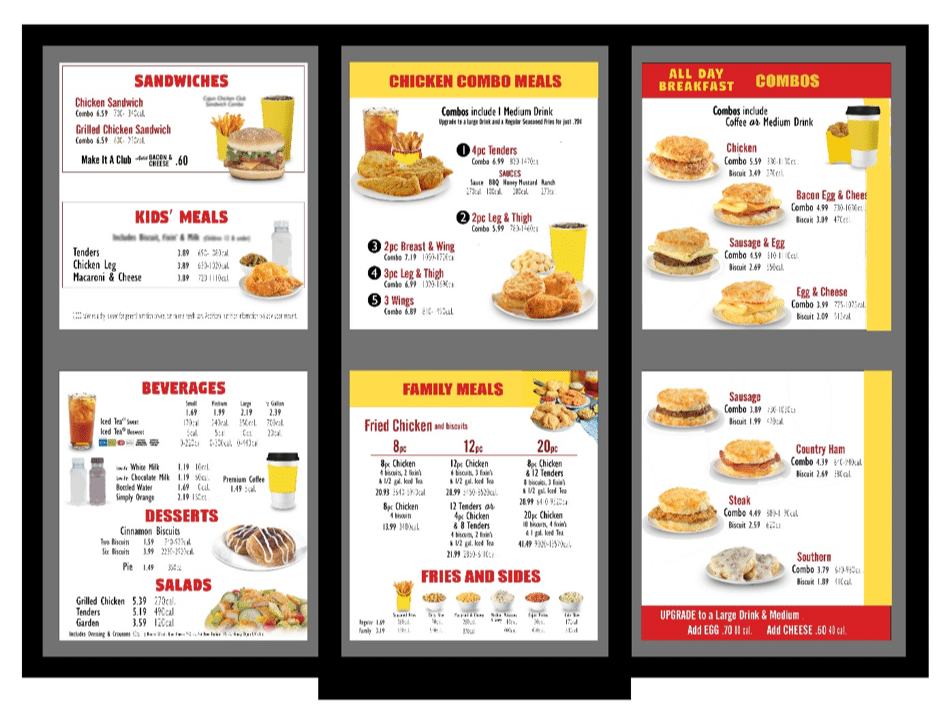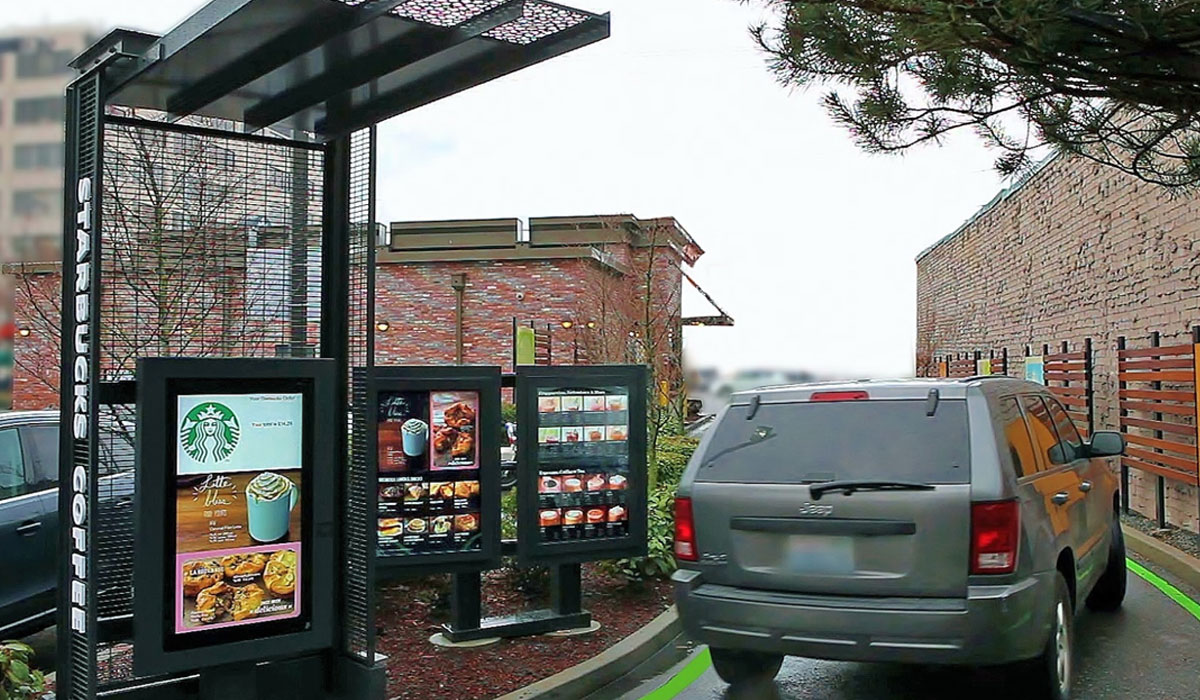Why should you optimize menuboards? Because the menuboard is the single most important communicator in a food service environment. It’s your top selling-tool. Successful menuboard optimization programs generate significant returns on investment. Optimizing menuboards can shave precious seconds off the order process, speeding throughput, increasing the number of transactions, and boosting overall sales. This translates into increased profitability. In fact, menuboard optimization has one of the highest ROI of any option available to foodservice operators.
A Trio of Analytics: Consumer Research, Financial Data, and Communication Design
In order to realize significant results, menuboard optimization involves combining three different skill sets—a trilogy of analytical tools that collectively result in meaningful advancements in menuboard communications.
READ MORE: Check out QSR’s 2022 Drive-Thru Report
This approach helps restaurant brands be smarter as they optimize their menuboard layout, design, content, and pricing structure in a way that promotes profitability while encouraging repeat customers. The process helps brands understand the thinking behind customer decisions. It provides a complete picture of customer needs, attitudes, and behaviors, and how these can be turned into desirable menu decisions. This article looks at each of the components of the Menuboard Optimization Trilogy.
1. Consumer Research Analytics
Consumer research plays an important role when it comes to menuboard optimization. Research should be conducted both prior to and following menuboard optimization.
Although there are many forms of research available, the following approaches have proven particularly beneficial for menuboard optimization.
Pre-Optimization Research
Use pre-design research as a diagnostic tool to help identify how customers are using the menuboards, what issues they have, and what specifically needs improvement. Research can involve ethnographic studies to observe customer behavior and menuboard use. Use customer intercept interviews to ask questions about their menuboard use, and to explore their likes and dislikes. Yet another approach is online research, where feedback can quickly and cost-effectively be collected from many consumers to quantify and prioritize key findings and insights.
Post-Optimization Research
This approach is used later to test and validate the effectiveness of the new optimization strategies, before new menuboard designs are developed and put into test stores. Focus groups can be used to gather qualitative research on consumer reactions and use of the new menuboard strategies. Quantitative consumer research is an effective way to reach hundreds of consumers and compare the performance of the optimized menuboards to the current menuboards. This quantitative research can also evaluate purchase intent as well as gather data on consumer attitudes and preferences. It’s important to note that all this strategy validation research can be conducted using color renderings of the menuboards. This allows for quickly identifying the best strategies before the creation of final menuboard designs, and before the costs associated with production and distribution to stores.

2. Financial Data Analytics
This part of the Trilogy focuses on analyzing sales data to identify ways to optimize the menuboard layout, product placement, space allocation, menu mix, and food and beverage attach opportunities.
Basic Sales Analysis
All brands track sales but it is astonishing how few use this data to help them create an optimized menuboard. Understanding where your sales are coming from can help you learn how and where to position items on your menuboard. Where you place products on your menuboard should be driven by an analysis of sales and profits. Some of your menu items are better sellers than others and some contribute more to your bottom line. These should be more prominent on your menuboard. Analyzing sales also helps identify which poor selling items should be eliminated altogether to free up precious menuboard real estate for high priority items.
Taking a Deep Dive into Data
Beyond basic sales and profit data there’s a treasure trove of data that’s often overlooked. Sophisticated analytical skills and algorithms can be used to develop and test many different product and pricing strategies to determine which are best for improving business performance. Brands can realize increased margins across menu items, without negatively impacting customer traffic. Programs can be created and tailored specifically to the needs of the brand, geographic segment, outlet, transaction type, and customer. Here are a few of these tools.
Menu Pricing Analysis. This allows for the creation of sophisticated pricing strategies which are modified over time as internal and external environments change. Utilizing a technique that is more predictive than traditional consumer research, historical sales and consumer purchasing behavior are analyzed and the impact of price changes are studied at the item level, category level and across categories. Past promotional activity is analyzed to calculate impact on sales, profit, and traffic. The end-result is a brand-specific pricing strategy for your optimized menuboards that’s transparent to the customer and allows for higher profit without negatively impacting customer traffic and buying behavior.
Revenue Situation Analysis. This is a thorough review of restaurant sales drivers and their relationships to one another from the outlet to the enterprise level. Using detailed transactional and customer data provides a foundation for the strategic understanding necessary to develop sound marketing strategy. Confronted with the challenge of growing system and same store sales, marketers need to identify opportunities across multiple revenue-driving levers, such as individual customer frequency, additional menu item attach rate, and promotional and pricing mix.
Menu Performance Analysis. This follows the revenue situation analysis and involves a comprehensive review of revenue performance of menu items, their related transactions, and relationship with other menu items. This leads to an understanding of the specific food and beverage menu items that have the highest attachment potential. Building sales and merchandising programs featuring those items can provide the highest likelihood of successfully growing sales.

3. Communication Analytics
This involves a communications assessment of the current menuboard by an experienced menuboard optimization consultant. The objective is to evaluate how effectively the menuboard’s language, images, colors, branding, typography, layout, navigation, and legibility come together to communicate and support your brand’s menu strategy. It’s critical that strategy drives the design of the menuboard. For example, if the menu strategy states that “we will increase ticket by increasing beverage attach,” does the current menuboard effectively communicate adding a beverage to a food selection?
Research has proven consumers prefer to order by images. The strategic use of food and beverage images can increase the sales of featured items. How does your menuboard stack up in this regard?
You should determine if the current menuboard is simple to navigate and order from. How have menu categories been arranged? Are popular items easy to find? What’s the clarity of key messages? Is the order process intuitive? Learning to think like a customer can help you assess your menuboard’s ease-of-navigation.
Customer eye-tracking and behavioral research has determined that menuboards have “hot spots”—specific areas on the menuboard where customers tend to look first and most frequently. These hot spots can be leveraged to have a positive impact on average check, ease-of-ordering and speeding throughput by putting the best-selling and highest margin items in these zones. The communication analysis should determine if the current menuboard is utilizing hot spots to advantage.
The communication analysis identifies what you are currently doing well and want to retain in your optimized menuboards. It also identifies the problem areas where design and communication techniques fall below best-practice. The analysis results in a “hit-list” of menuboard optimization opportunities.
Putting It All Together
Using the collective analytical findings of the Menuboard Optimization Trilogy, it’s time to develop your optimized menuboard communications. This typically following a series of sequential activities, as illustrated below:
1. Develop the Menuboard’s Strategic Layout. This is a “blueprint” for how the optimized menuboard will be organized. It expresses in words and schematic diagram form how the content will be organized to achieve the business goals and objectives set forth in the menu strategy. The schematic illustrates the optimized menuboard’s layout, product placement, space allocation and key communications. There may be several variations of the new menuboard layout developed before one is finalized and approved.
2. Visualize the Optimized Menuboard. Here, the strategic layout is developed into color renderings illustrating what the new menuboard might look like. There’s just enough detail in these renderings (visuals, graphics, copy, branding, colors) to conduct consumer research to quickly assess the validity of the new menuboard strategy.
3. Conduct Research to Validate the New Strategy. This will determine if the new menuboard strategy resonates with customers. Using the color renderings, conduct quantitative customer research to evaluate the new strategy before placing them in stores. Use renderings of the current menuboard as a control. See what works, and what needs tweaking. This will help confirm if the new strategy can achieve the desired business objectives.
A final word of advice, the most effective menuboard communications are the result of superior analytics and strategic thinking, not clever graphics.
Tom Cook and Howland Blackiston are co-principals of King-Casey. Established in 1953, King-Casey is a restaurant and foodservice business improvement firm







